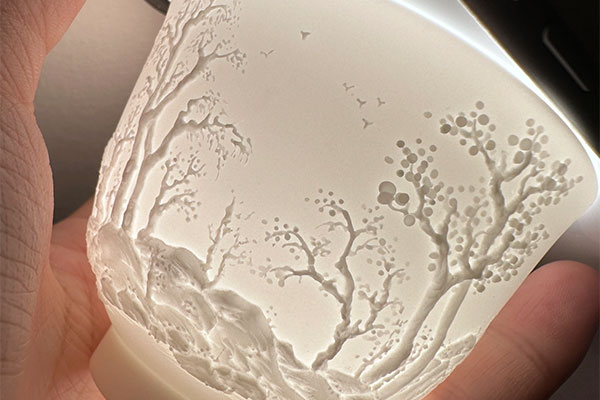Chinese Intangible Cultural Heritage - Jingdezhen Porcelain
Introduction
Jingdezhen porcelain, hailed as the treasure of the "Porcelain Capital," is an outstanding representative of traditional Chinese ceramic art. Renowned for its delicate texture, exquisite patterns, and unique craftsmanship, Jingdezhen porcelain is not only practical ware but also a work of art, embodying the essence of China's millennia-old ceramic culture.
History
The history of Jingdezhen porcelain dates back to the Han Dynasty, but it truly flourished during the Tang and Song Dynasties. During the Song Dynasty, Jingdezhen became the national center for porcelain production, and the emergence of blue-and-white porcelain in the Yuan Dynasty propelled Jingdezhen porcelain onto the global stage. By the Ming and Qing Dynasties, Jingdezhen porcelain reached its zenith, becoming imperial ware and being exported overseas, symbolizing Chinese culture.
Regional Characteristics
Located in Jiangxi Province, Jingdezhen benefits from its unique porcelain clay resources and a long-standing tradition of porcelain making, earning it worldwide fame as the Porcelain Capital. Jingdezhen porcelain is celebrated for its characteristics of being "white as jade, thin as paper, and resonant as a chime." Different historical periods have seen distinct styles of Jingdezhen porcelain, such as the bluish-white porcelain of the Song Dynasty, the blue-and-white porcelain of the Yuan Dynasty, the polychrome porcelain of the Ming Dynasty, and the famille rose porcelain of the Qing Dynasty, each with its own unique features.
Cultural Significance
Jingdezhen porcelain is an important carrier of Chinese traditional culture. Its patterns often draw inspiration from natural landscapes, historical stories, myths, and legends, reflecting the aesthetic tastes and cultural connotations of the Chinese people. The decorations on porcelain are not only ornamental but also imbued with auspicious meanings and philosophical ideas, such as "dragons and phoenixes bringing prosperity" and "flowers symbolizing wealth and honor."
Craftsmanship
The production process of Jingdezhen porcelain is highly complex, involving steps such as material selection, body forming, painting, glazing, and firing. Each step requires exquisite skill and extensive experience. Particularly, the creation of blue-and-white porcelain and famille rose porcelain demands advanced painting techniques and meticulous craftsmanship.
Preservation and Innovation
As a Chinese Intangible Cultural Heritage, Jingdezhen porcelain has received widespread attention and protection from the state and society. The Jingdezhen municipal government and cultural institutions actively promote the inheritance and development of porcelain art, nurturing a new generation of ceramic artists. At the same time, Jingdezhen porcelain continues to innovate, integrating modern design and demonstrating renewed vitality.
Conclusion
Jingdezhen porcelain is a treasure of Chinese traditional culture, carrying a rich historical and cultural legacy. By preserving and passing down this ancient art form, we can not only appreciate the beauty of porcelain works but also gain a deeper understanding and appreciation of Chinese traditional culture.







